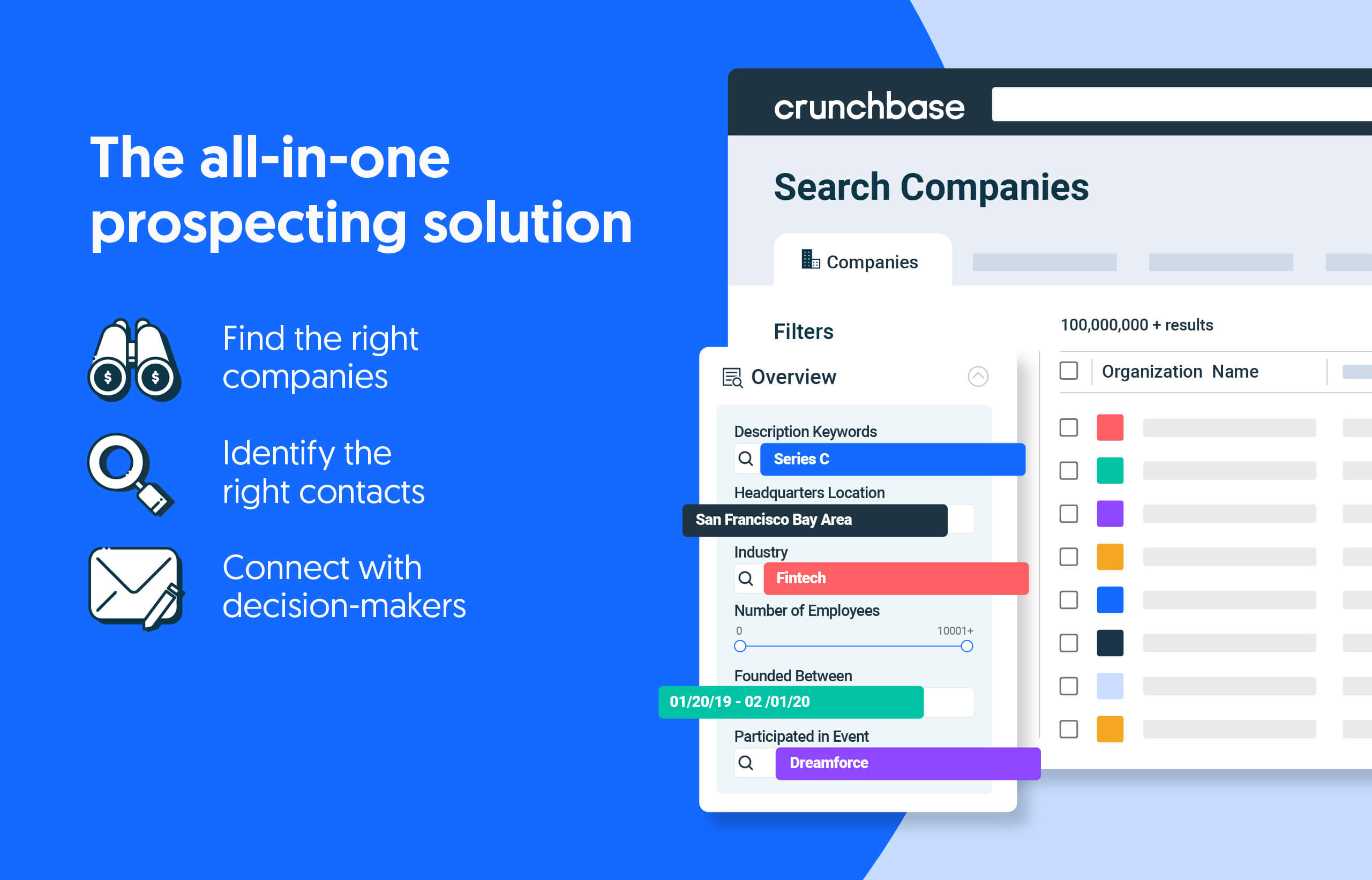By Bob Ma
The trend toward speedy, last-mile delivery has grown exponentially worldwide in the past five years. According to a study by Clutch, online shoppers now typically receive packages within two to three days. But there are still limitations.
People want faster, cheaper delivery
As it turns out, two-day delivery is no longer enough, not for consumers or for e-commerce leaders wanting to provide the ultimate customer experience. The aspiration now is for near-instant delivery and at no extra charge.
Search less. Close more.
Grow your revenue with all-in-one prospecting solutions powered by the leader in private-company data.
What has been holding the industry back from this goal?

Here are the main gating factors. First, warehouses are large and located far away from city centers. The typical Amazon fulfillment center is 800,000 square feet, the equivalent of 16 football fields. There is no way to fit this in a city center, so the resulting distance from customers increases delivery time.
Second, large e-commerce retailers carry too many different products. Amazon, for example, carries more than 353 million SKUs (stock-keeping units), of which only about 12 million are fulfilled by its Prime two-day delivery service, while the rest face longer delivery times.
Third, multiple pickup points, especially for grocery pick-and-deliver services such as Instacart, causes delays: Delivery people must drive to multiple grocery stores, search for products, and then stand in the checkout line each time.
Enter q-commerce
The desire for near-instant delivery has spurred the emergence of q-commerce, or quick commerce, a new, faster form of delivery that can deliver in under 15 minutes. In q-commerce, online retailers fulfill orders using a network of urban-located micro-fulfillment centers that are usually only 2,000 to 5,000 square feet. This reduces the distance to the customer, dramatically increasing delivery speed. This approach fits especially well with household and perishable items, such as groceries.
To create micro-fulfillment centers, the typical approach is for q-commerce retailers to scoop up overlooked, less expensive real estate in urban locations, while some startups are also pursuing alternative approaches such as converting rented apartments or even shipping containers into micro-fulfillment centers.
To further increase delivery speed, q-commerce retailers minimize complexity by carrying far fewer items for sale. While a traditional grocery store has up to 60,000 SKUs, q-commerce micro-fulfillment centers generally only hold 2,000 to 4,000 SKUs of the highest turnover items.
Q-commerce also eliminates multiple pick-up points. Orders are picked and packed from a single micro-fulfillment center, and because the customer has already paid for the merchandise online, there is no checkout line—all this greatly increases efficiency.
Search less. Close more.
Grow your revenue with all-in-one prospecting solutions powered by the leader in private-company data.
Big wins all around
The q-commerce model is working for customers, but also for the operators who’ve been achieving profitability early on. For example, Gopuff ($40 billion valuation) has been EBITDA profitable from Day One, attributing its profitability to the high bargaining power achieved from only purchasing a small selection of SKUs at high volume.
As a result of q-commerce’s innovations, this sector is seeing explosive growth globally, with six unicorns minted in just the past couple of years: Gopuff, Getir, Gorillas, Flink, Glovo and JOKR.
The q-commerce future looks bright
So, where will we go from here in q-commerce? First, while the U.S. and Europe were first-movers in q-commerce, there will be accelerating expansion into emerging markets. For instance, Rappi recently acquired Avocado in Brazil to move into q-commerce.
Second, we’ll see acquisitions or partnerships with q-commerce startups by leading retailers. This follows the same playbook in the traditional delivery space where large retailers have partnered with startups to enable same-day delivery (e.g. Costco partnered with Instacart).
Third, we’ll see industry consolidation. Similar to the ride-hailing and food delivery markets that are largely duopolies, q-commerce is an industry that benefits significantly from economies of scale. More micro-fulfillment centers creates more business, fueling a virtuous cycle.
Fourth, expect IPOs of leading q-commerce startups in the next two or three years as they strive to continue building their capital advantage. Indeed, Gopuff, the world’s biggest q-commerce startup, has recently begun preparing for an IPO.
A last word
We will see q-commerce continue to flourish overall. The sector benefited particularly from COVID-19 lockdowns, which significantly increased consumer demand worldwide for grocery delivery services. Stay tuned, there’s still far more to come in the q-commerce era.
Bob Ma is an investor at WIND Ventures, where he invests in retail, energy and mobility startups. Prior to joining WIND, he was an investor at Soma Capital, where he invested venture capital globally across consumer and enterprise sectors. He previously wrote for Crunchbase News on banking in Latin America.
Illustration: Dom Guzman

Stay up to date with recent funding rounds, acquisitions, and more with the Crunchbase Daily.



![Illustration of a guy watering plants with a blocked hose - Global [Dom Guzman]](https://news.crunchbase.com/wp-content/uploads/quarterly-global-3-300x168.jpg)
67.1K Followers